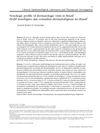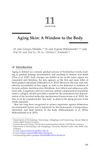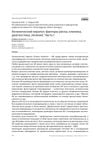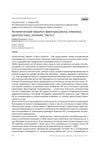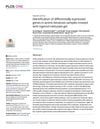Actinic Keratosis: A Clinical and Epidemiological Review
June 2012
in “
Anais Brasileiros de Dermatologia
”
actinic keratosis squamous cell carcinoma ultraviolet radiation apoptosis pathway photoexposed epithelium cellular proliferation lesions sunscreens keratinocyte intraepithelial neoplasia epidermis therapeutic modalities skin health photoprotective measures AK UV radiation skin cancer sun protection skin lesions skin therapy skin care

TLDR Actinic keratosis can lead to skin cancer, is more common in fair-skinned people, and can be reduced with sunscreen and treated effectively.
The document from 11 years ago is a review on Actinic keratoses (AK), benign skin neoplasms that can evolve into squamous cell carcinoma. AKs are primarily caused by ultraviolet radiation and are markers of chronic exposure to sunlight. They were most common in adults and older, fair-skinned individuals. Damage to the apoptosis pathway in photoexposed epithelium promotes cellular proliferation and the persistence of the lesions. The authors suggested strategies to identify risky phenotypes, promote early diagnosis, provide adequate treatment, encourage clinical follow-up, stimulate skin self-examination, and promote photoeducation and photoprotection. The risk of AK was 14.1 times higher in fair-skinned patients compared to those with dark skin. Sunscreens can reduce the number of AKs by up to 40%. A new classification scheme for AK was developed in 2012, dividing lesions into three levels of keratinocyte intraepithelial neoplasia (KIN) based on the level of atypia in the epidermis. Various therapeutic modalities for AKs were effective, with most offering complete cure for over 30% of patients per session. Regular follow-up of patients with AK was seen as an opportunity to promote skin health and photoprotective measures.
